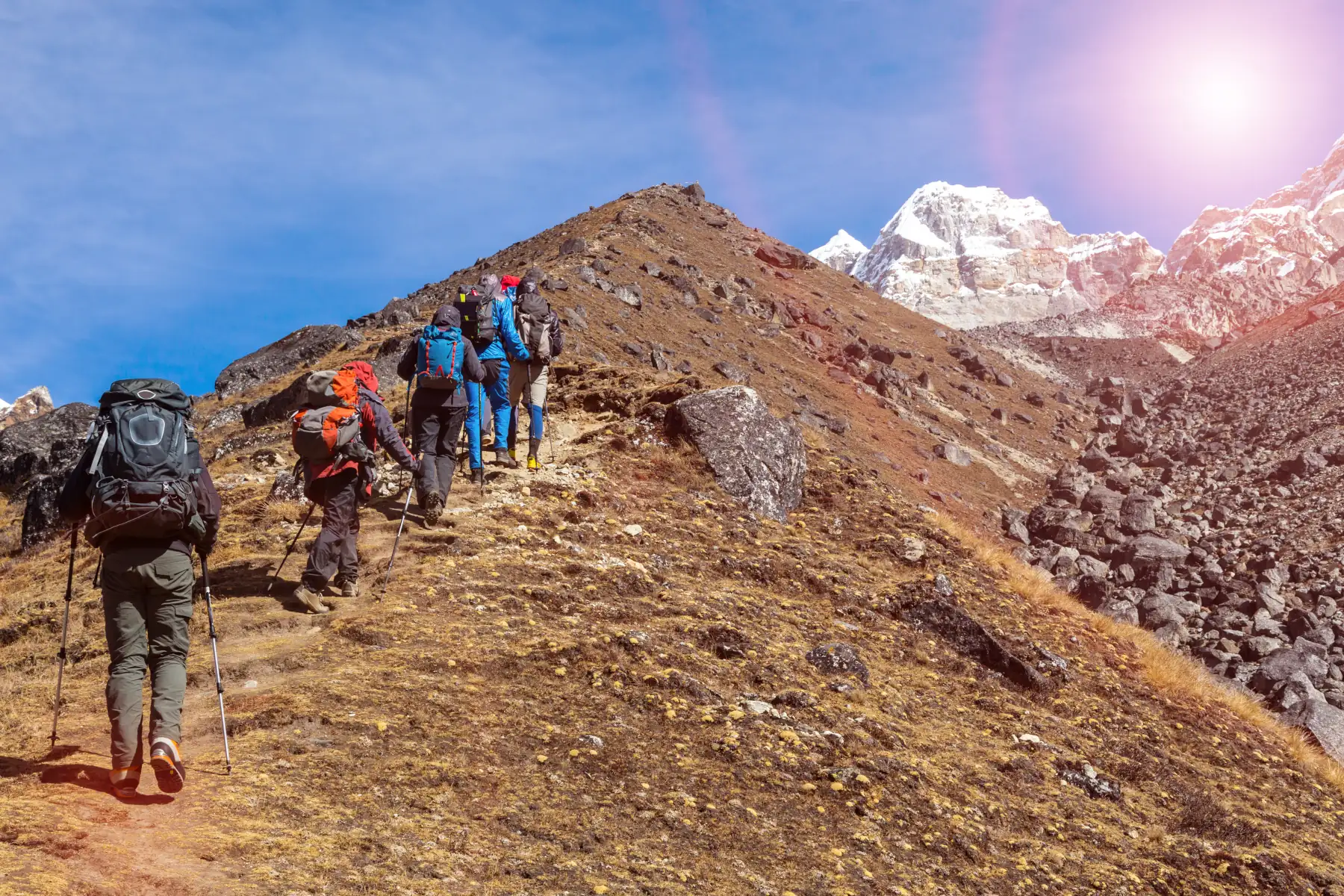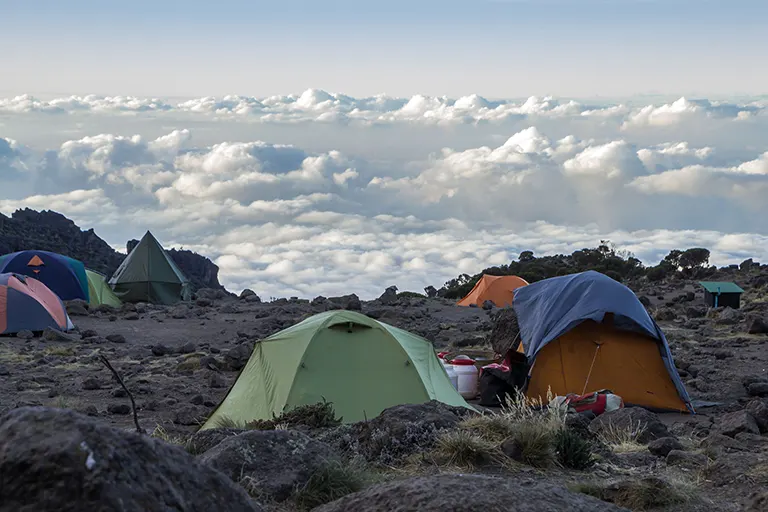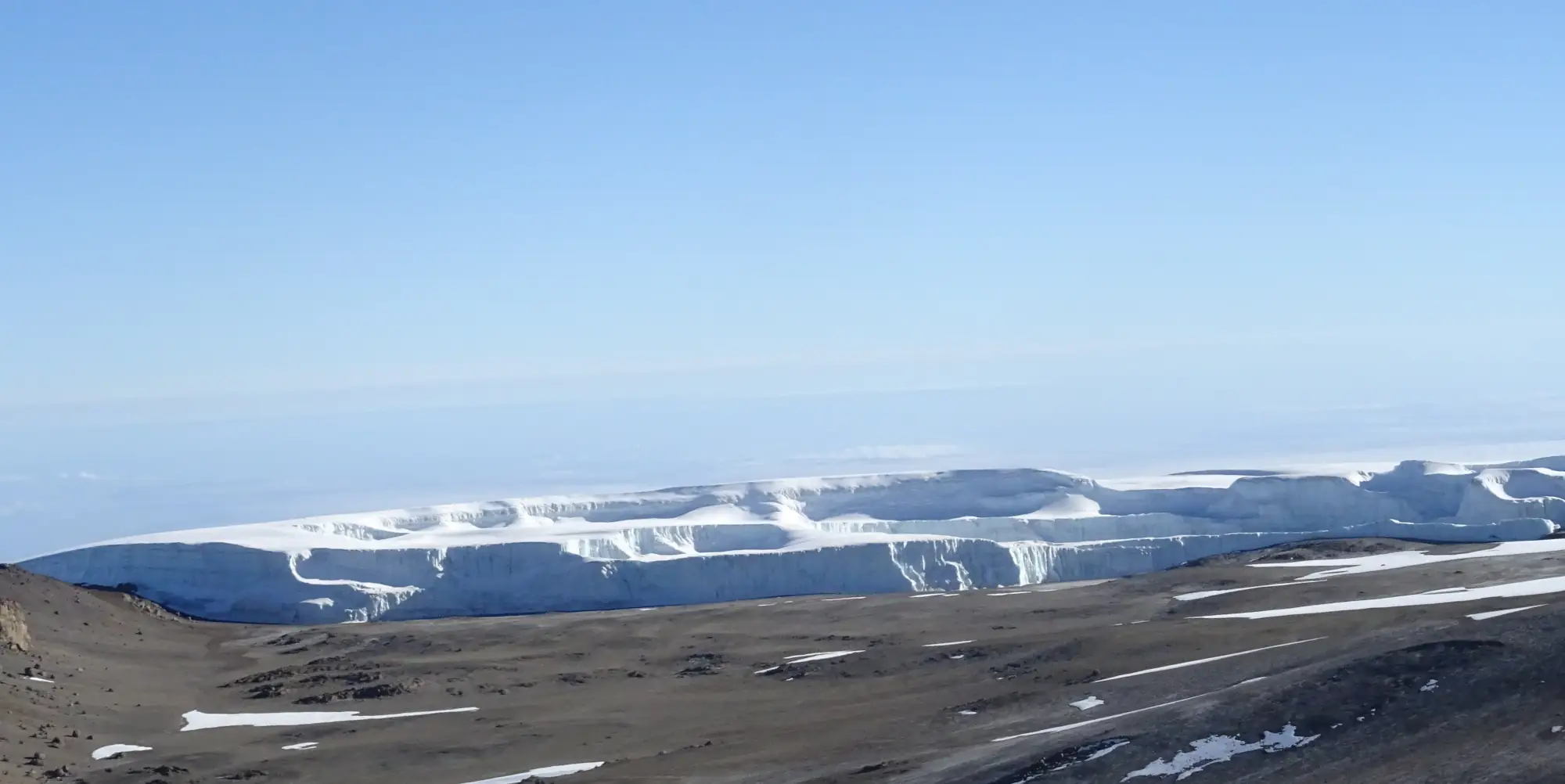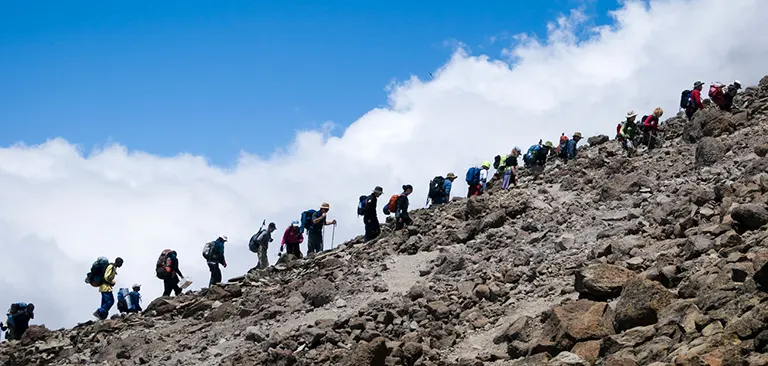Discover Mount Kilimanjaro, Africa's highest peak. Standing tall at 19,341 feet, it's a free-standing volcanic summit in Tanzania. Mt Kilimanjaro offers diverse ecological zones: cultivated foothills, lush rainforests, alpine deserts, and a snowy summit. The mountain attracts trekkers seeking a non-technical climb. Its highest point, Uhuru Peak, promises panoramic views. Climbing Kilimanjaro doesn't require special mountaineering skills, but acclimatization is crucial. The trek typically takes 5-9 days, with various routes offering distinct experiences. Benson Safaris Tanzania organizes safe, guided climbs, ensuring a memorable journey. Explore Kilimanjaro's natural beauty, ecological variety, and the rewarding challenge it presents.
To reach Mount Kilimanjaro, fly into Kilimanjaro International Airport (JRO) or Arusha Airport (ARK). Both airports connect to major African hubs. From there, drive to the park entrance or the starting point of your chosen trekking route. Travelers can also arrange airport transfers with local tour operators. Choose a reputable guide like Benson Safaris Tanzania for a safe and enjoyable journey to the iconic Mount Kilimanjaro.
Mount Kilimanjaro experiences distinct climate zones due to its elevation. The base has a tropical climate, becoming colder as you ascend. The temperature decreases about 6.5°C for every 1,000 meters gained.
The mountain has five climate zones: cultivation, forest, heath and moorland, alpine desert, and summit. The lower zones are generally warmer and moister, while the upper zones are cooler and drier. It's essential for climbers to be prepared for varied conditions and potential temperature extremes during their ascent. Considerable temperature variations occur between day and night, and weather conditions can change rapidly.
| Zone | Climate |
|---|---|
| Base | Tropical |
| Forest | Warmer and moister |
| Heath and Moorland | Warmer and moister |
| Alpine Desert | Cooler and drier |
| Summit | Cooler and drier |
Mount Kilimanjaro offers several trekking routes, each with unique advantages. The Marangu Route is the easiest and features hut accommodations, making it a comfortable choice. The Machame Route, known for its scenic beauty, offers varied landscapes and is great for acclimatization. Lemosho, longer and more remote, provides a quieter experience with higher success rates due to its gradual ascent. Each route caters to different preferences and fitness levels, ensuring a memorable climb.

Explore Kilimanjaro via the Lemosho route: scenic, successful, and uncrowded. Starts in rainforests, crosses Shira Plateau, merges with Machame. Perfect for wildlife and acclimatization.

Trek Kilimanjaro's Machame Route, the 'Whiskey Route,' favored for its diverse, picturesque ascent. Discover unique features and the best climbing seasons with us.

The Marangu route offers affordable hut accommodations and is perceived as easy. Opt for a 6-day trek for better acclimatization. It's popular but crowded with consistent terrain and limited scenic variety.

Explore Kilimanjaro's Northern Circuit Route with Benson Safaris: an uncrowded path offering a serene trek and extended acclimatization. Conquer new heights—trek with us today!

The Rongai route, near the Kenyan border, offers a serene wilderness experience with a gradual climb, ideal for a quieter, easier ascent.
Ensure you pack layers, suitable clothing for various climates, sturdy boots, a quality sleeping bag, necessary medications, and essential personal items. Consult your tour operator for specific requirements.
Engage in a fitness regimen that includes cardiovascular exercises, strength training, and altitude simulation workouts. Consider consulting with a fitness professional or your healthcare provider for personalized advice.
Yes, comprehensive travel insurance is essential. Ensure it covers medical emergencies, evacuation, and trip cancellations. Confirm that it specifically includes coverage for high-altitude trekking.
The optimal climbing conditions are during the dry seasons, typically from January to March and June to October. However, Kilimanjaro can be climbed year-round, and each season has its unique appeal.
Minimize the risk of altitude sickness by adopting a gradual ascent, staying well-hydrated, and taking advantage of acclimatization days during the climb. Discuss any concerns with your experienced guide.
Aim for a well-rounded fitness routine that includes aerobic exercises, strength training, and endurance workouts. Additionally, incorporate hikes or walks with elevation gain to simulate the conditions of the climb.
While there is no strict age limit, participants should be in good health and physical condition. Consult with your healthcare provider to assess your fitness for the climb, especially for individuals over 60.
Ensure you have the necessary permits, typically organized by your tour operator. You'll also need a valid passport and may require a Tanzanian visa, depending on your nationality. Confirm these details well in advance.
Benson Safaris Tanzania, founded in 2006, offers expertly guided Wildlife Safaris, Mountain Treks, and Beach Breaks.
WhatsApp us